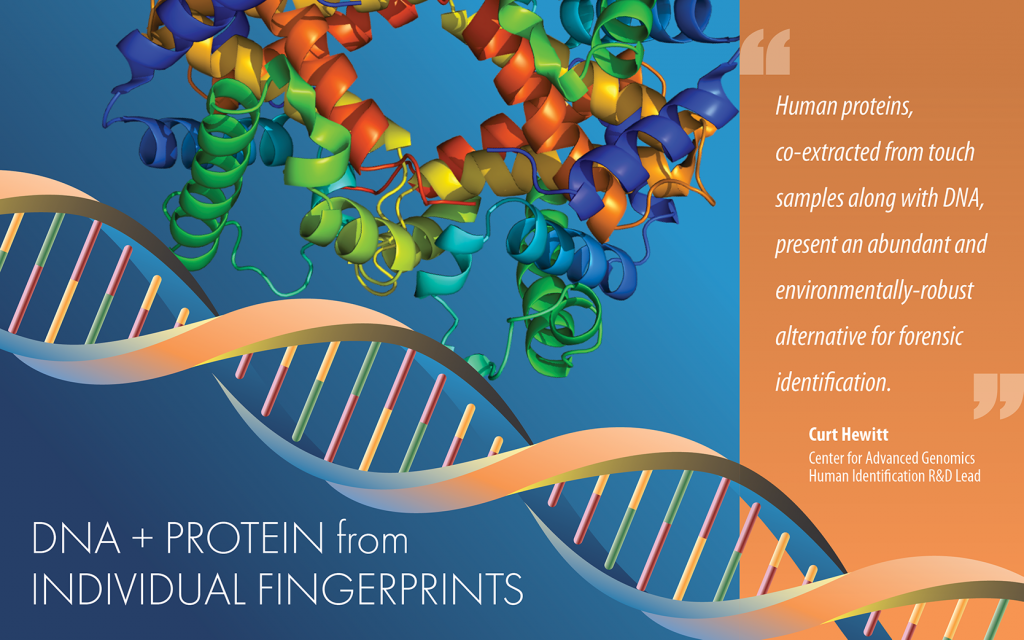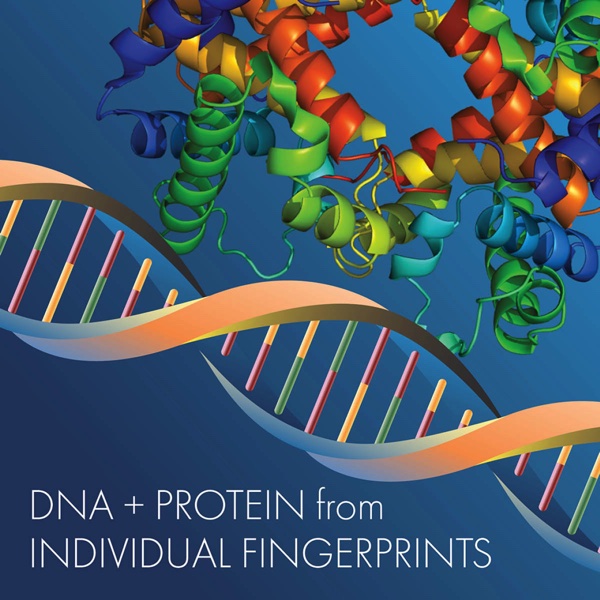
Abstract: Human touch samples represent a significant portion of forensic DNA casework. Yet, the generally low abundance of genetic material combined with the predominantly extracellular nature of DNA in these samples makes DNA-based forensic analysis exceptionally challenging. Human proteins present in these same touch samples offer an abundant and environmentally-robust alternative. Proteogenomic methods, using protein sequence variants arising from nonsynonymous DNA mutations, have recently been applied to forensic analysis and may represent a viable option looking forward. However, DNA analysis remains the gold standard and any proteomics-based methods would need to consider how DNA could be co-extracted from samples without significant loss. Herein, we describe a simple workflow for the collection, enrichment and fractionation of DNA and protein in latent fingerprint samples. This approach ensures that DNA collected from a latent fingerprint can be analyzed by traditional DNA casework methods, while protein can be proteolytically digested and analyzed via standard liquid chromatography-tandem mass spectrometry-based proteomics methods from the same touch sample. Sample collection from non-porous surfaces (i.e., glass) is performed through the application of an anionic surfactant over the fingermark. The sample is then split into separate DNA and protein fractions following centrifugation to enrich the protein fraction by pelleting skin cells. The results indicate that this workflow permits analysis of DNA within the sample, yet highlights the challenge posed by the trace nature of DNA in touch samples and the potential for DNA to degrade over time. Protein deposited in touch samples does not appear to share this limitation, with robust protein quantities collected across multiple human donors. The quantity and quality of protein remains robust regardless of fingerprint age. The proteomic content of these samples is consistent across individual donors and fingerprint age, supporting the future application of genetically variable peptide (GVP) analysis of touch samples for forensic identification.
E-mail: chewitt@signaturescience.com
Authors: Kathleen Q. Schulte,1,a F. Curtis Hewitt1,a,* Tara E. Manley,1,† Andrew J. Reed,2 Maryam Baniasad,4 Nicolette C. Albright,1 Megan E. Powals,1 Danielle S. LeSassier,1 Alan R. Smith,1 Liwen Zhang,2 Leah W. Allen,1 Benjamin C. Ludolph,1 Katharina Weber,1 August E. Woerner,5 Michael A. Freitas,2,3 and Myles W. Gardner1
1 Signature Science, LLC, Austin, Texas, USA
2 Mass Spectrometry and Proteomics Facility, Campus Chemistry Instrument Center, The Ohio State University, Columbus, Ohio, USA
3 The Ohio State University Wexner Medical Center, Columbus, Ohio, USA<
4 Department of Chemistry and Biochemistry, The Ohio State University, Columbus, Ohio, USA
5 Center for Human Identification, University of North Texas Health Science Center, Fort Worth, Texas, USA
† Current Affiliation: HCA Healthcare, Austin, Texas, USA
a Contributed equally to this work and considered as co-first authors.
* Corresponding author

